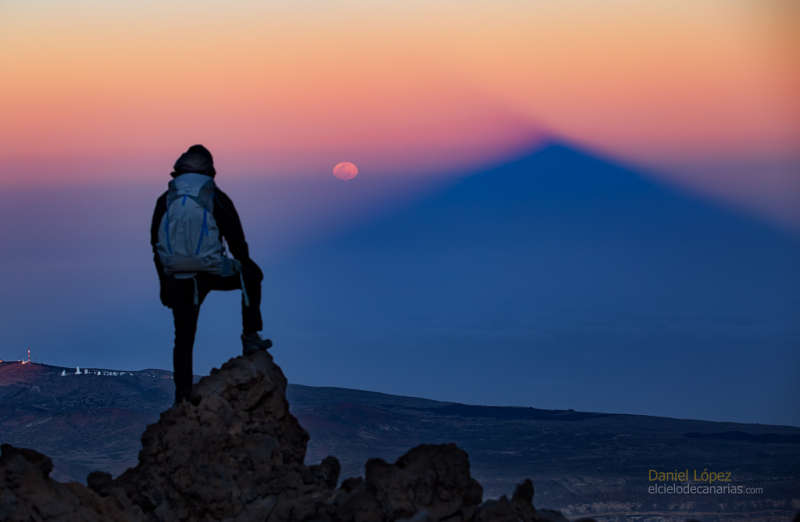 |
Астронет: Астрономическая картинка дня Восход Луны и тень горы http://variable-stars.ru/db/msg/1632683/eng |
Credit & Copyright: Daniel Lopez
(El Cielo de Canarias)
Explanation:
What
phase of the Moon is 3.14 radians from the Sun?
The Full Moon, of course.
Even though the
Moon might look full
for several days, the Moon is truly at its full phase when it is
3.14 radians (aka 180 degrees) from the Sun in ecliptic longitude.
That's opposite the Sun in planet Earth's sky.
Rising as the Sun set
on
March 9, only an hour or so after the moment of
its full phase, this orange tinted and
slightly flattened
Moon still looked full.
It was photographed opposite the setting Sun from Teide National Park
on the Canary Island of Tenerife.
Also opposite the setting Sun, seen from near the Teide volcano peak
about 3,500 meters above sea level, is the mountain's rising
triangular shadow
extending into Earth's dense atmosphere.
Below the distant ridge line on the left are the
white telescope domes of
Teide
Observatory
Authors & editors:
Robert Nemiroff
(MTU) &
Jerry Bonnell
(USRA)
NASA Web Site Statements, Warnings,
and Disclaimers
NASA Official: Jay Norris.
Specific
rights apply.
A service of:
LHEA at
NASA /
GSFC
& Michigan Tech. U.
